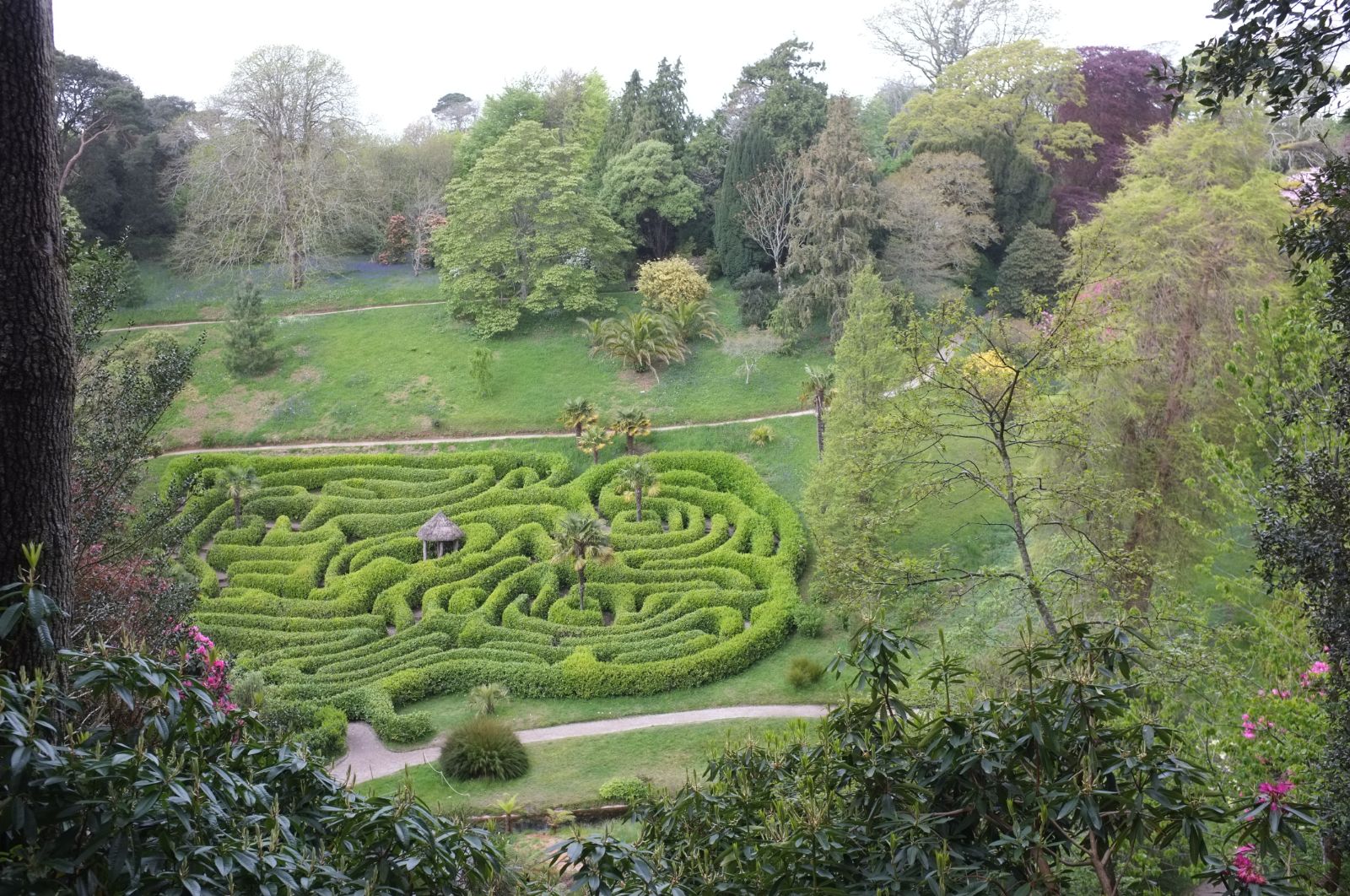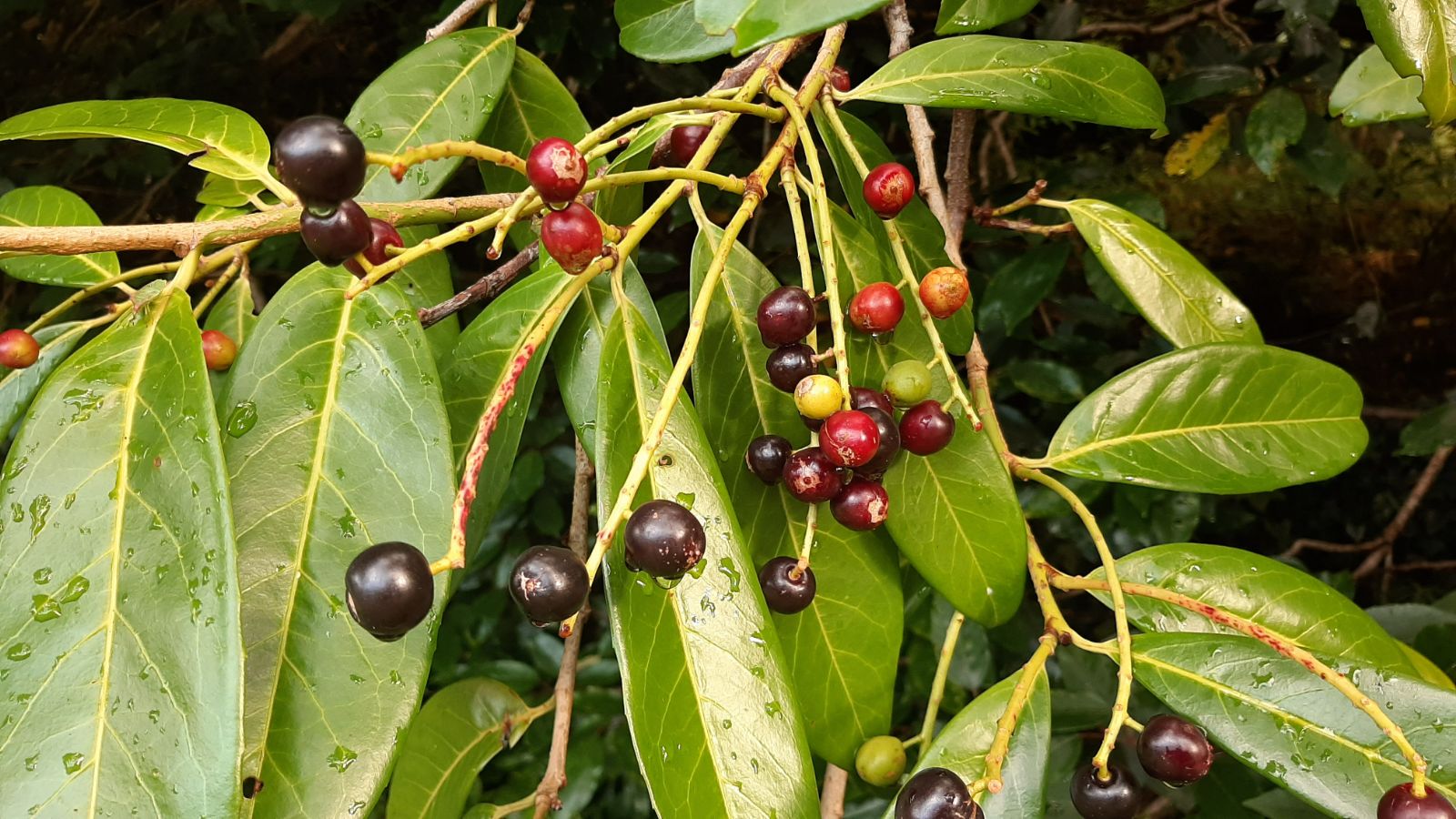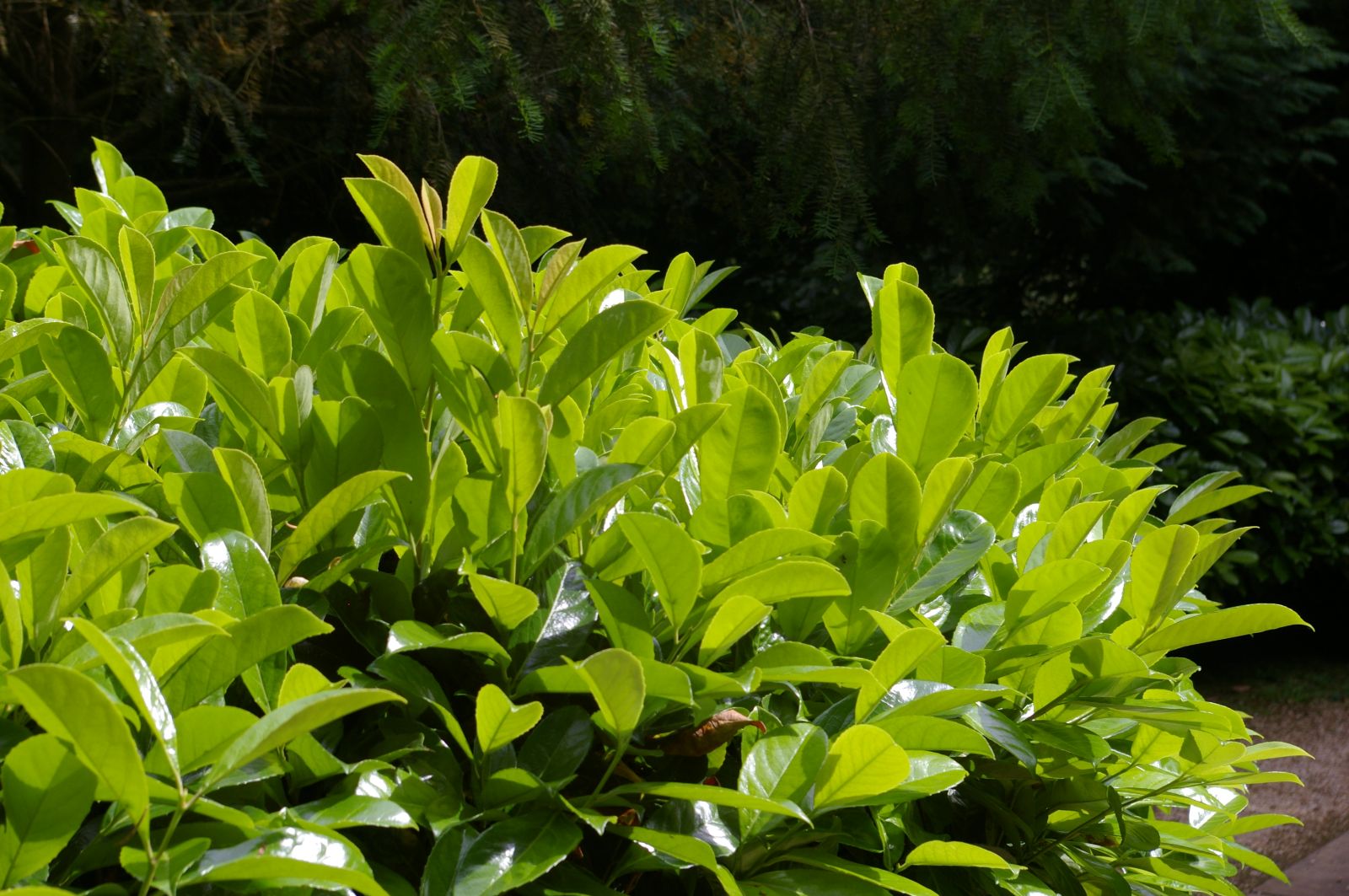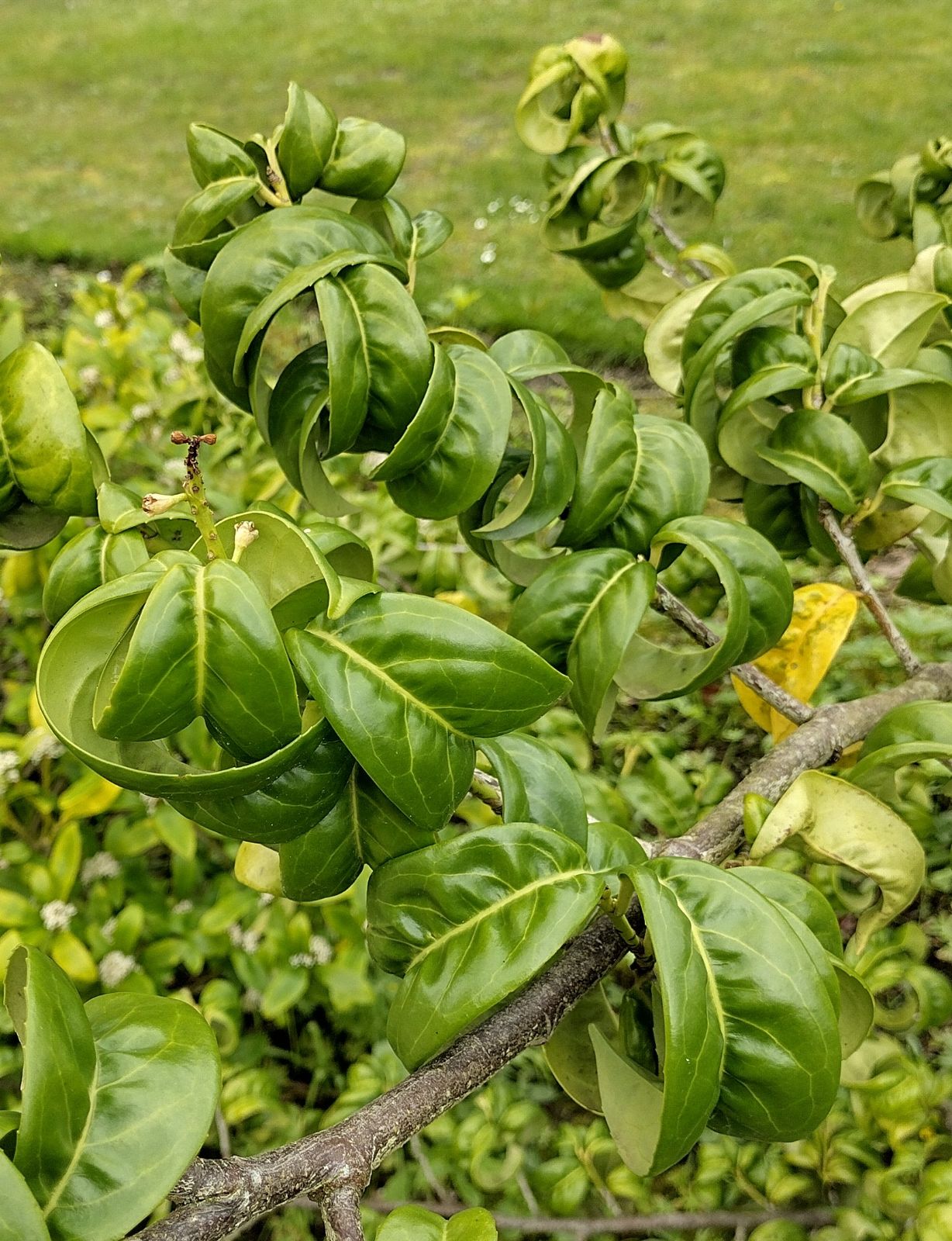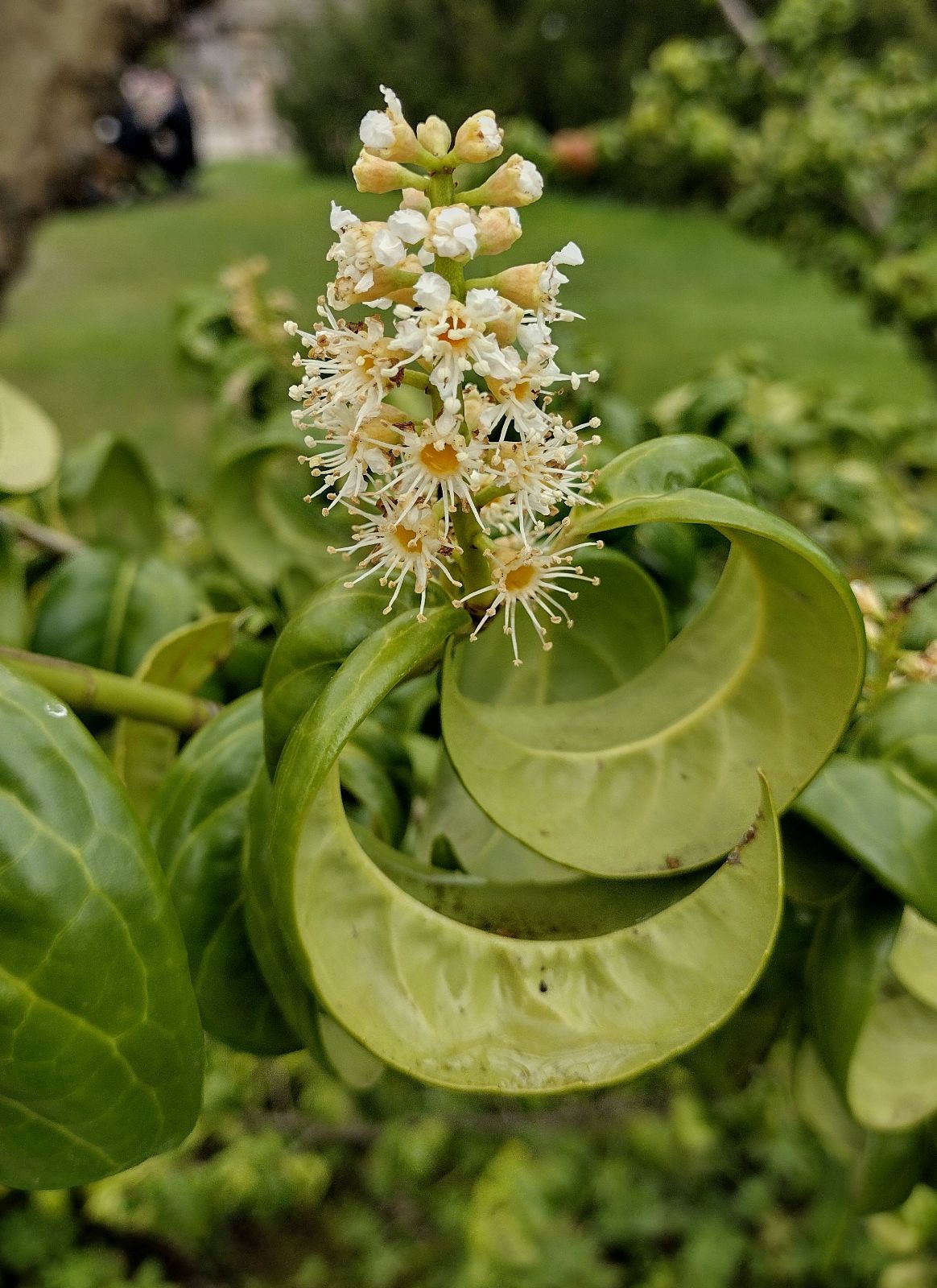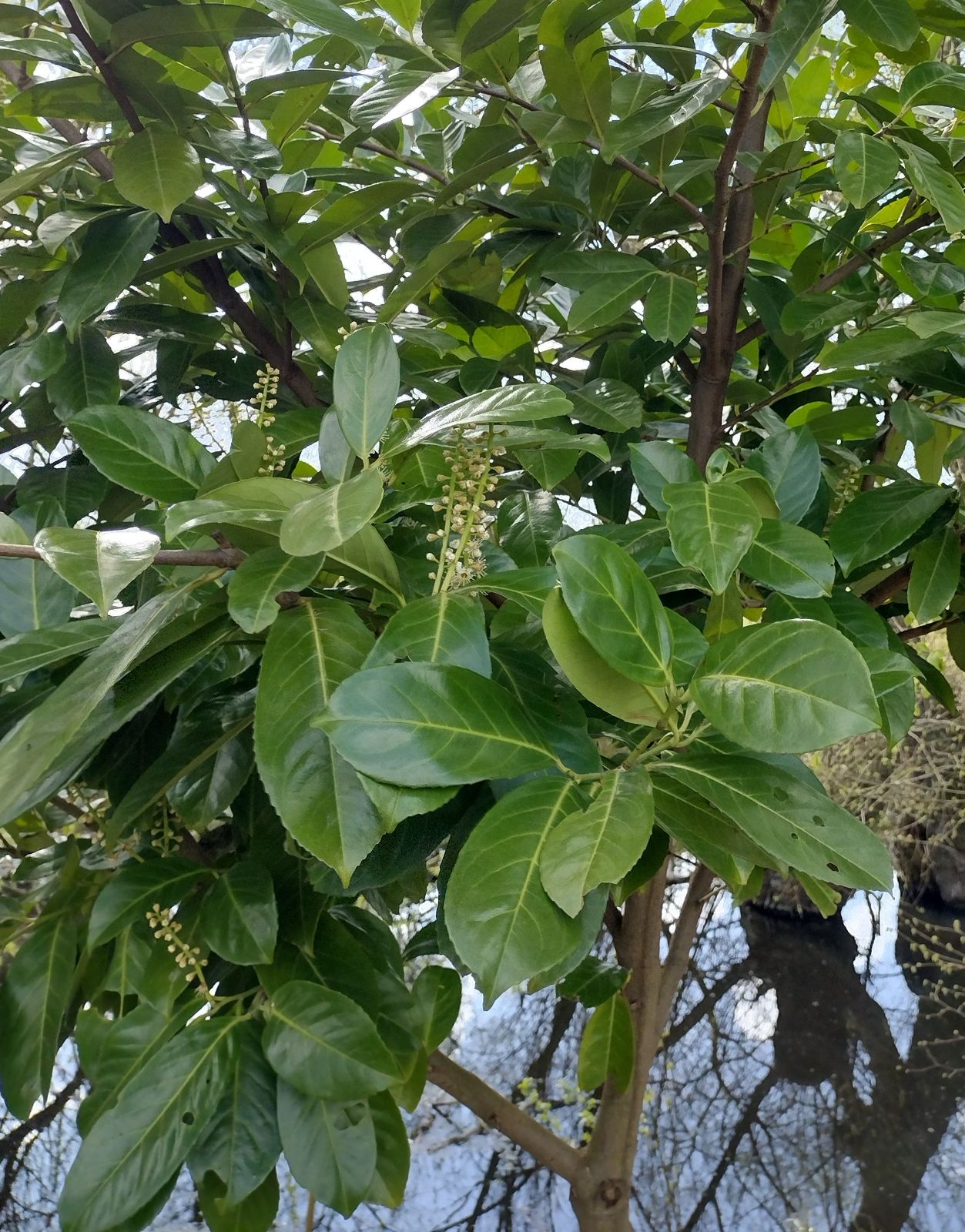Prunus laurocerasus
Credits
Article from Bean's Trees and Shrubs Hardy in the British Isles
Recommended citation
'Prunus laurocerasus' from the website Trees and Shrubs Online (treesandshrubsonline.
Genus
Synonyms
- Laurocerasus officinalis Roem.
- Padus laurocerasus Mill.
Infraspecifics
Other taxa in genus
- Prunus alleghaniensis
- Prunus americana
- Prunus × amygdalo-persica
- Prunus amygdalus
- Prunus angustifolia
- Prunus apetala
- Prunus arabica
- Prunus argentea
- Prunus armeniaca
- Prunus avium
- Prunus besseyi
- Prunus brigantina
- Prunus campanulata
- Prunus canescens
- Prunus cantabrigiensis
- Prunus cerasifera
- Prunus cerasus
- Prunus cocomilia
- Prunus concinna
- Prunus conradinae
- Prunus consociiflora
- Prunus cornuta
- Prunus cuthbertii
- Prunus dasycarpa
- Prunus davidiana
- Prunus × dawyckensis
- Prunus dielsiana
- Prunus domestica
- Prunus dulcis
- Prunus emarginata
- Prunus × fontanesiana
- Prunus fruticosa
- Prunus glandulosa
- Prunus grayana
- Prunus himalaica
- Prunus hortulana
- Prunus humilis
- Prunus ilicifolia
- Prunus incana
- Prunus incisa
- Prunus jacquemontii
- Prunus kansuensis
- Prunus lannesiana
- Prunus litigiosa
- Prunus lusitanica
- Prunus maackii
- Prunus mahaleb
- Prunus maritima
- Prunus maximowiczii
- Prunus microcarpa
- Prunus mira
- Prunus mugus
- Prunus mume
- Prunus nigra
- Prunus nipponica
- Prunus orthosepala
- Prunus padus
- Prunus pensylvanica
- Prunus persica
- Prunus pilosiuscula
- Prunus prostrata
- Prunus pumila
- Prunus rufa
- Prunus salicina
- Prunus sargentii
- Prunus serotina
- Prunus serrula
- Prunus serrulata
- Prunus sibirica
- Prunus × sieboldii
- Prunus simonii
- Prunus sogdiana
- Prunus speciosa
- Prunus spinosa
- Prunus ssiori
- Prunus subcordata
- Prunus subhirtella
- Prunus takesimensis
- Prunus tangutica
- Prunus tenella
- Prunus tomentosa
- Prunus triloba
- Prunus virginiana
- Prunus × yedoensis
An evergreen shrub of quick growth and wide-spreading habit, attaining a height of over 20 ft, twice as much in width; young shoots pale green and, like all other parts of the plant, devoid of hairs or down. Leaves of leathery texture, dark shining green, of various shapes and sizes, usually oblong, but sometimes oblanceolate, averaging from 4 to 6 in. in length by rather less than one-third as much wide, margin obscurely toothed; stalk about 1⁄2 in. long. The blade always bears on its lower surface near the base two or more glands. Flowers in axillary and terminal racemes, 3 to 5 in. long, 3⁄4 in. through; each flower on a stalk 1⁄6 in. long, itself dull white, 1⁄3 in. across. Fruits black-purple, about 1⁄2 in. long, conical, and containing a similarly shaped stone.
A native mainly of the forest region that stretches from south of the Caspian through the western parts of the Caucasus and Transcaucasia and the mountains of Anatolia, south of the Black Sea; in Europe it occurs in the Belgrade forest near Istanbul, and in some of the mountain forests of Bulgaria; a relict stand occurs in Serbia, where it does not fruit but maintains itself by layering. Throughout most of its range it is associated with the oriental beech, and often with Rhododendron ponticum. It reached western Europe at the end of the 16th century and was in cultivation in Britain early in the next century.
P. laurocerasus flowers in April, nearly two months in advance of the Portugal laurel, but is not so ornamental. For some strange reason the cherry laurel is rarely seen at its best, which is when it is grown as an isolated specimen unmolested by the pruner. It then makes a vigorous evergreen of exceptional size and elegance. It bears pruning well, however, and is, in consequence, often used to form a low covering for banks and slopes by keeping it severely cropped. This may have been necessary in earlier times when dwarf evergreens were scarcer, but there are several now that may be made to serve such a purpose without having to undergo the periodical mutilation to which laurels are subjected. Still less is it adapted for planting in ordinary shrubberies, where its vigorous self-assertion and hungry roots give little chance for things near it.
The cherry laurel does not appear to be quite so hardy as the Portugal laurel, although on dry soil it is not much injured by any temperature above 5° F. It is admirably adapted for planting as undergrowth in thin woodland, where there is room for its full development. All the forms are easily increased by late summer cuttings placed in gentle heat. A considerable number of varieties are now offered by nurserymen, some of garden origin, some natural. Only the most distinct of these can be mentioned, and of these very few have been authoritatively described. A study of the cultivated varieties by H. J. van de Laar was published in Dendroflora No. 7 (1970), pp. 42–61 (in Dutch, with English summary and numerous illustrations).
From the Supplement (Vol. V)
cv. ‘Otto Luyken’. – This cultivar was of recent introduction when the current edition was being prepared. It grows taller than stated, to at least 5 ft, but is of compact habit.
cv. ‘Magnoliifolia’. – For an interesting note on this cultivar by Susyn Andrews and Dr Heino Heine, see Int. Dendr. Soc. Year Book 1982, pp. 78–9.
'Angustifolia'
Described by Loudon as a more dwarf-growing plant, which seldom flowers; leaves about one-third as wide as in the normal form, i.e., scarcely 1 in. wide (Arb. et Frut. Brit., Vol. II, p. 716 (1838)). See also ‘Parvifolia’.'Camelliifolia'
Leaves of ordinary size, but curled and twisted. Curious, but not ornamental. There is an example at Wakehurst Place, Sussex, and another in the R.H.S. Garden at Wisley, in Seven Acres.
'Caucasica'
A vigorous, erect shrub with more or less elliptic leaves up to 7 in. long, about 3 in. wide, deep green. One of the finest.'Colchica'
Leaves up to 7 in. long, 2 in. wide, tapering to the stalk.'Compacta'
Leaves about the ordinary size, but the habit dwarf and close. Introduced to Kew from Transon’s nurseries, Orleans.'Herbergii'
A dense erect shrub with narrow elliptic leaves up to 6 in. long, 1{3/4} in. wide, tapered at the apex, glossy. Very hardy and a good hedging plant. Raised in Germany.'Magnoliifolia'
The finest of all the varieties in foliage, the largest leaves 10 to 12 in. long, 3 to 4{1/2} in. wide. A strong grower, it may, if desired, be trained into tree form by tying up a lead and gradually removing the lower branches. It came to Kew under its present name from the Hon. Charles Ellis in 1897, but according to him was also known as latifolia. The variety ‘Macrophylla’ (?’Bertinii’), raised at Versailles, seems to be similar, judging from the original descriptions (Rev. Hort. (1869), p. 180 and (1885), p. 18).

